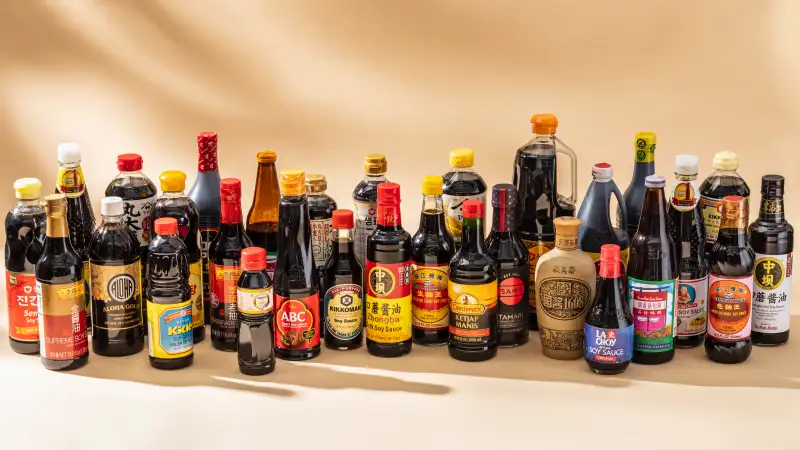Soy Sauce: Unveiling the Complexities of a Culinary Staple
In the pantheon of condiments, soy sauce stands tall as a ubiquitous and revered elixir, enthralling taste buds with its rich umami flavor and cultural significance. Originating from East Asia, particularly China, soy sauce has traversed continents, earning a revered place in global kitchens for its ability to elevate dishes with its savory depth and versatility.
Historical Roots and Cultural Heritage:
Soy sauce’s history spans millennia, tracing back to ancient China, where it emerged as a method of fermenting soybeans, wheat, salt, and other grains to create a savory seasoning. Initially known as “jiang,” this early form of soy sauce underwent evolution through various dynasties, refining the fermentation process and enhancing its taste.
Over centuries, soy sauce disseminated across East Asia, including Japan and Korea, with each culture adapting the recipe to suit local preferences. Its historical significance in Asian culinary traditions reflects the artistry of fermentation and the cultural reverence for umami, the savory “fifth taste.”
Ingredients and Crafting Process:
Soy sauce derives its distinctive flavor from fermented soybeans, wheat, salt, and sometimes other grains. The fermentation process, often facilitated by naturally occurring molds and bacteria, breaks down proteins and starches, resulting in the complex and robust flavor profile characteristic of soy sauce.
The crafting process involves cooking soybeans and wheat, fermenting them with specific mold cultures like Aspergillus, combining the mixture with saltwater, and allowing it to ferment for months to years in barrels. This extended fermentation period fosters the development of deep flavors, with some artisanal varieties undergoing aging for several years to attain complexity.
Varieties and Culinary Applications:
Soy sauce exists in various types, each offering a unique taste profile and culinary application. The two primary classifications are light (or regular) soy sauce and dark soy sauce. Light soy sauce possesses a saltier taste and is lighter in color, commonly used as a seasoning in stir-fries, marinades, and dipping sauces.
Dark soy sauce, on the other hand, features a deeper color and a slightly sweeter, richer taste due to a prolonged aging process. Its viscosity and robust flavor make it suitable for braising, adding color to dishes, and enhancing the depth of flavors in sauces and gravies.
Moreover, there are specialized types such as tamari, a gluten-free variant originating from Japan, with a milder taste and higher concentration of soybeans, and shoyu, a Japanese-style soy sauce featuring a balanced flavor profile.
Health Considerations and Nutritional Value:
Soy sauce, while cherished for its flavor, offers nutritional benefits as well. It is a source of essential amino acids, providing a boost of protein to dishes. However, due to its high sodium content, moderation is key for individuals mindful of their salt intake, with low-sodium options available to accommodate dietary preferences.
Additionally, soy sauce contains compounds like antioxidants and phytonutrients, contributing to its potential health benefits, including potential heart health benefits and aiding digestion.
Cultural Influence and Global Integration:
Soy sauce’s global embrace underscores its widespread appeal and integration into diverse culinary landscapes. In East Asian cuisines, it serves as a foundational ingredient, enhancing the flavors of dishes ranging from sushi in Japan to kimchi in Korea, and stir-fries in China.
Beyond Asia, soy sauce has integrated itself into global cuisines, becoming a staple in fusion dishes, marinades, dressings, and dipping sauces. Its versatility and ability to harmonize with various ingredients have made it a beloved ingredient in Western kitchens, influencing the flavor profiles of dishes worldwide.
Conclusion:
Soy sauce, with its rich heritage, intricate crafting process, and multifaceted flavors, remains an indispensable component in global gastronomy. From its ancient roots in fermentation to its contemporary stature as a pantry essential, soy sauce continues to captivate palates with its umami richness and culinary versatility.
As a condiment that transcends cultural boundaries, soy sauce symbolizes the fusion of tradition and innovation, enriching dishes and delighting taste buds across continents. Its enduring legacy in the culinary world ensures its place as a cherished and essential ingredient in the realm of flavors and tastes.




